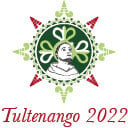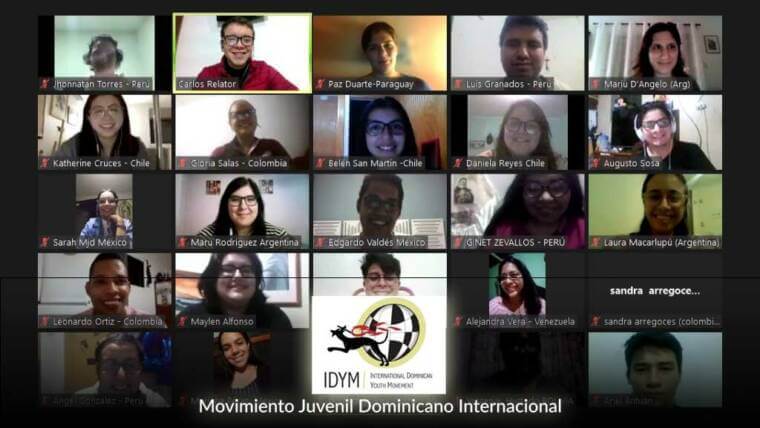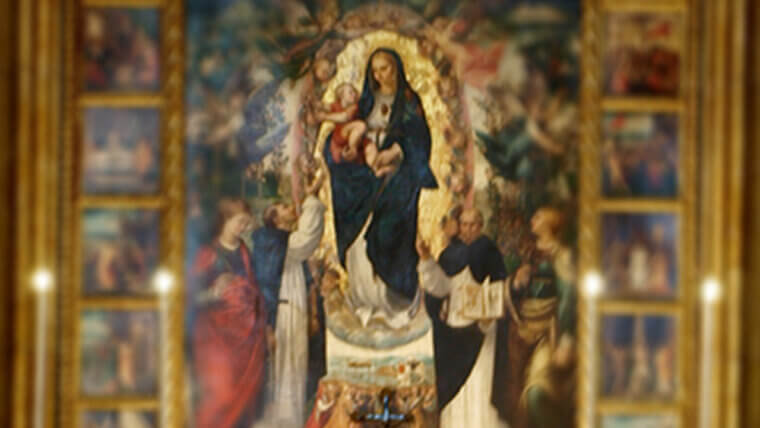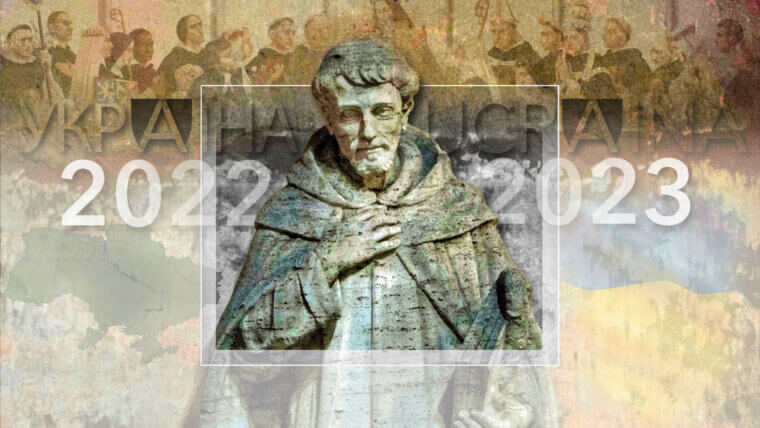Communicators: “Proclaim happily and faithfully the Gospel of peace” (Bologna,110)

The promotion of peace or for peace refers to the good practices of communicators. That is, communicators in the service of peace promotion. The communicative act is more than a kind of channel through which arguments such as preaching, vocational promotion, etc. pass. Communicating means not ceasing to be human and not allowing the technological media to replace or “annul” capacities that lie within the human being, such as a critical eye, honesty, respect for others (cf. World Communications Day – WCSD 2024).
This ‘technological Darwinism’ has motivated the contents of the messages referring to the professional and human quality of communicators and consecrated people: “Artificial Intelligence (AI) and the wisdom of the heart”, “AI and Peace”, “Pilgrims of Peace”. Therefore, from the spirit of the Ordo Praedicatorum (OP), three reflections can be pointed out: the communicative identity and initiative for peace, resorting to testimonies against pessimism and having good practices in the management of digital communication.
- Identity and communicative initiative for peace

Dusting off the phrases can give a little charismatic oxygen: “Peace is possible, if each one of us wants it; if each one of us loves Peace, educates and forms his own mentality in Peace, defends Peace, works for Peace” (Paul VI, 1974). And in the Constitution it was mentioned as a characteristic of a Dominican friar: “constant in peace, assiduous in study, fervent in preaching”[1] . In coherence with the Church, the tendency of recent General Chapters of the Order of Preachers has reaffirmed the natural vein of a preacher, to be a messenger of peace (Rom 10,15); the history and work of many brothers and sisters testify to this. (Cfr. GC Tultenango, 48).
The promotion of Justice and Peace is also a communicative priority. We recall the General Chapter of Krakow, 2004, which instituted the Promoters for Justice and Peace (91), who now work together with the Dominican Sisters of Apostolic Life – Dominican Sisters International, DSI – in the formation of new Dominicans who face the challenges of Justice and Peace (cfr. GC Bogotá, 27). The Permanent Delegation of the Order to the UN (Geneva) and the coordination work of the Order’s International Commission for Justice and Peace are in the same tradition. Also the “Salamanca Process” and the “Month of Peace”, in the sense of evangelisation and integral development (Cfr. ACG Biên Hòa, 152).
So, the narrative is rich for a communicator; peace promotion could fit into “content is king and interaction is queen”[2] . Our charismatic culture thus becomes the domain of Dominican influencers, of intellectuals, of the more contemplative: “life becomes history”, “Communicate by meeting people where they are and as they are”, “Listen with the ears of the heart”, “Speak with the heart in truth and love”[3] .
Just to remember and acknowledge the testimony of those who at this moment do not cease in their preaching for peace. Saint Dominic, selling his patrimony of books. Francisco de Vitoria, Pedro de Córdoba and Bartolomé de las Casas, defending the natives of the New World. Fray Martín and Fray Juan Macías, accompanying slaves and migrants. Saint Catherine of Siena, mediating ecclesial communion and peoples. Pierre Claverie, cultivating inter-religious dialogue in Algeria, etc. (Cfr. Tultenango, 49). The topic is relevant (cf. Tultenango 249, b). If you look at the map of wars and conflicts: Iraq, Ukraine, Burkina Faso, Somalia, Sudan, Yemen, Myanmar, Nigeria, Syria, Haiti, Venezuela, Ecuador, …, in several of these countries there is a Dominican man or woman experiencing pain, protecting children, delivering food, writing and asking for prayers for peace.
AI can contribute to “finding new and creative ways to promote/communicate justice and peace” (GC Bogotá, 230).
2. Ecclesial testimonies against pessimism
The contribution to peace is never miniscule, each person can work for peace in the smallest of areas. It is a persevering, sometimes controversial and undervalued work.
- One of the phenomena that show human veins was expressed on the night of 24-25 December 1914, during the First World War. Soldiers from both sides noticed the lights and Christmas songs coming from the enemy trenches, so they approached the neutral territories to share food, tobacco, buttons, improvised souvenirs, play football and pray for the fallen and their families. It was the time of the pontificate of Benedict XV, who advocated peace (Encyclical “Ad Beatissimi Apostolorum”), calling it a “useless massacre” (1917), but his peace proposals did not stop the war, but he embarked on humanitarian work. (Fazio 2019).
- “All is lost with war, nothing can be lost with peace“, said Pius XII in his message broadcast over the radio (24 August 1939), which was his medium of communication par excellence, but on 1 September, with the invasion of Poland, the tragedy of the Second World War (1939-1945) began. This time, the Christmas truce was denied by the Nazi regime. With the possibilities of diplomatic mediation evaporating, Pius XII undertook his service of charity and assistance to the civilian and military victims of the war. It is said that he wept and burned the protest ready for publication in the Osservatore Romano (August 1942), when he learned that the Dutch Catholic Bishops protested against the anti-Semitic measures and hundreds of religious men, women and lay people of Jewish origin (e.g. the Carmelite scientist Edith Stein and her sister) were retaliated against. They were arrested and taken to concentration camps. (Fazio, History of Contemporary Ideas 2019)
- His moral and spiritual strength advocated for freedom and human dignity, he was undaunted by John Paul II; he supported the Solidarity movement that sought liberation from communist rule. In the context of the Cold War, many forces contributed to the fall of the Berlin Wall (1989), making it the most significant event of the 20th century and bringing about German reunification, the end of communism in Eastern Europe, the strengthening of the European Union and the triumph of human rights.
3. Good practices in digital communication management
Professional approach. There are several recommendations for communication, especially digital communication, but in this case there are non-negotiable practices for communicators: a critical sense, building networks, real dialogue. The idea of the messages for World Communications Day is one of mutual trust and a professional approach between the Church and the media[4] . For example, the synodal key to communication is listening: Who? How? Alternative voices?
Critical capacity and wisdom of the heart. It runs the risk of being rich in technology and poor in humanity, but it can also be an opportunity to “awaken man from hypnosis, from his delusion of being omnipotent, autonomous, self-referential. The human moral dimension is always called upon, as regulation could bring dangerous traits of manipulation: “Who is watching?[5]
The networks as a horizon of hope for the Provincial institutional presence – Ordo Praedicatorum – in digital channels. Altogether there are more than half a million followers[i] , and if the influencers of the Dominican Family are included, the trend #OPforPeace would be achieved. According to Paul VI: “it is possible, if everyone wants it”. For example, the Jubilee of Consecrated Life 2025, “Pilgrims of Hope, on the way of Peace”, is approaching, to highlight the “signs of reconciliation among men” (Rome, February 2024).
Truth in communication is at the heart of it, to omit it would be to favour big interests. Disinformation and “fake news” are contaminated by manipulation, it is also a reflection of the professional quality of the media. (Galdón 1999). “The truth will set you free” (Jn 8,32): “Liberation from falsehood and the search for relationship… In order to discern the truth, it is necessary to distinguish what favours communion and promotes good, and what, on the contrary, tends to isolate, divide and oppose”[6] .
Dialogue on the digital continent with a language of peace. The miracle of encounter, rescuing compassion in the style of Dominic of Caleruega, with relevant and timely arguments. “We need communicators who are willing to dialogue, who are committed to promoting integral disarmament and who strive to dismantle the war psychosis that nestles in our hearts”. As St. John XXIII prophetically exhorted in the Encyclical Pacem in terristrue peace […] can rest […] only on mutual trust” (n. 113). A trust that needs communicators who are not self-absorbed, but bold and creative, ready to take risks in order to find common ground on which to meet” (Pope Francis, JMCS, 2023).
[1] Constitution. Ed. 1954, n. 452 § II.
[2] Daniele Chieffi in “La missione digitale: Comunicazione della Chiesa e social media”. PUSC, Rome, 2016
[3] World Communications Day 2020, 2021, 2022, 22023.
[4] La porte, José María. Introduction to the Institutional Communication of the Church. Daniel Arasa’s article on the Magisterium of the Catholic Church on communication. P 34-38
[5] Message of the Holy Father Francis for the 58th World Communications Day. Artificial intelligence and wisdom of the heart for a fully human communication. 24 January 2024 Pope Francis.
[6] Message of the Holy Father Francis for the 52nd World Communications Day. “The truth will set you free” (Jn 8:32). Fake news and peace journalism. 2018
Paul VI (cf. Message of 1972: “The instruments of social communication at the service of truth”).
[i] Quantitative digital analysis of the Provinces of the Order of Preachers. 49 Facebook pages with approximately 400,000 followers. 19 Instagram pages with more than 86,000 followers, 25 Youtube channels with approximately 300,000 subscribers and 13 Twitter accounts with approximately 50,000 followers, while, among other media, 17 Newsletters, 14 Magazines, 10 radio stations, 4 newspapers, 2 Podcast channels and a television channel have been identified.







